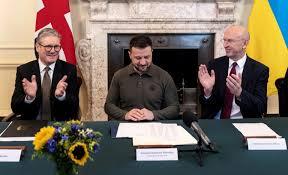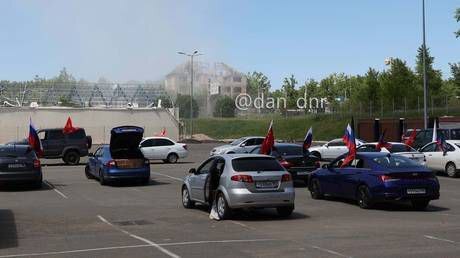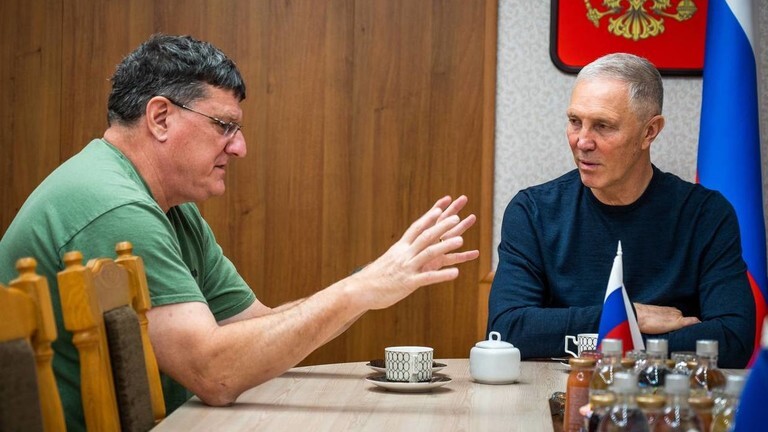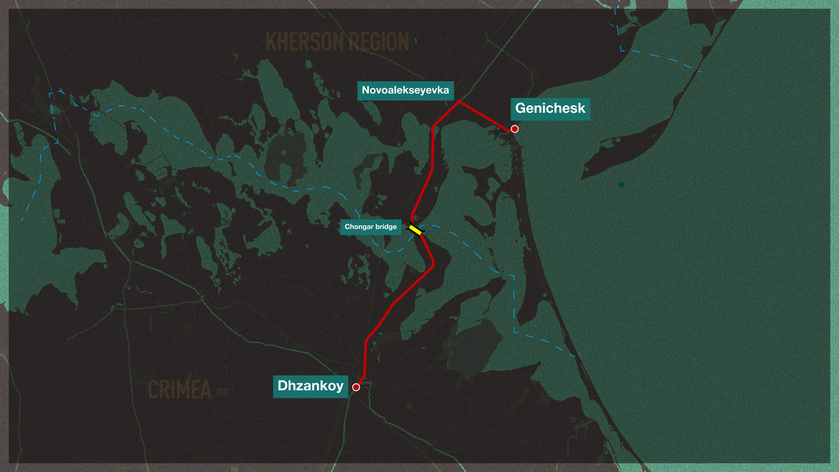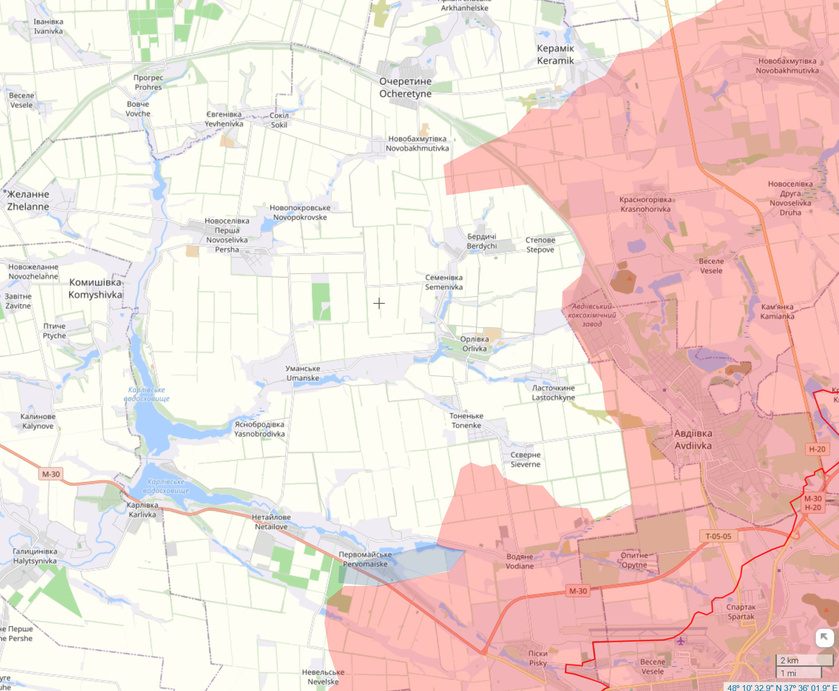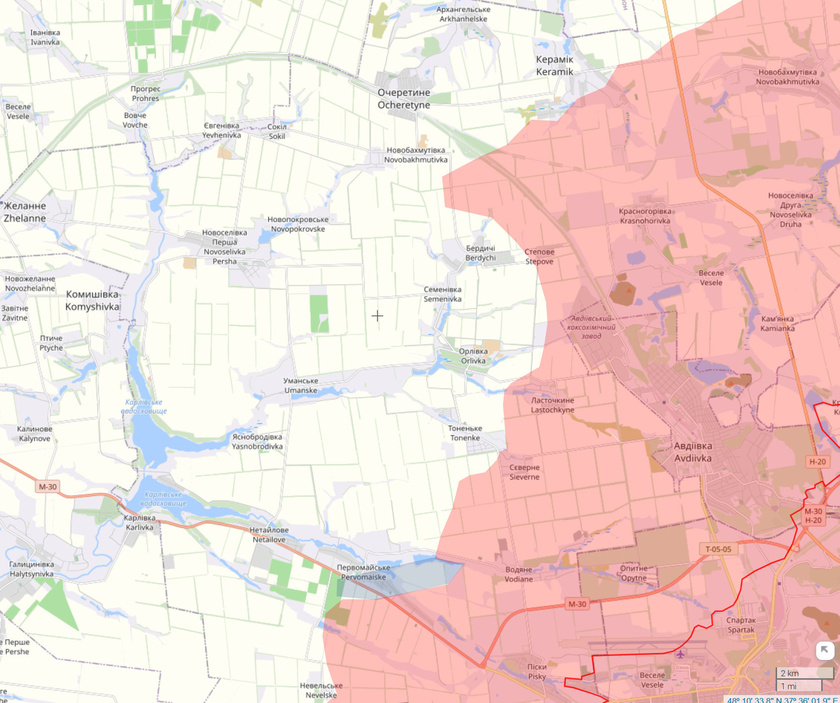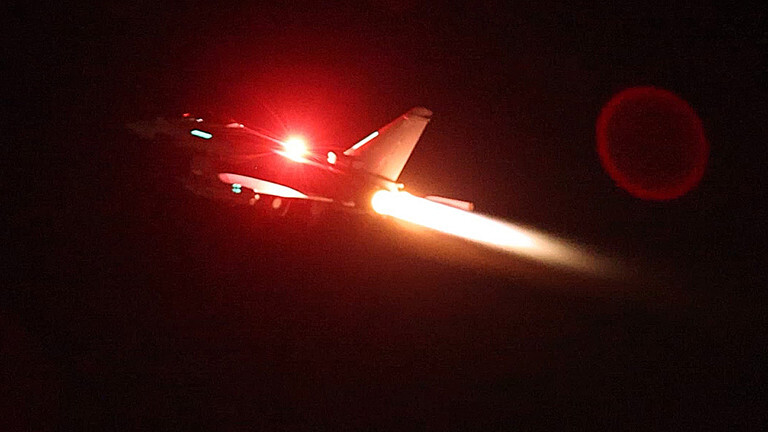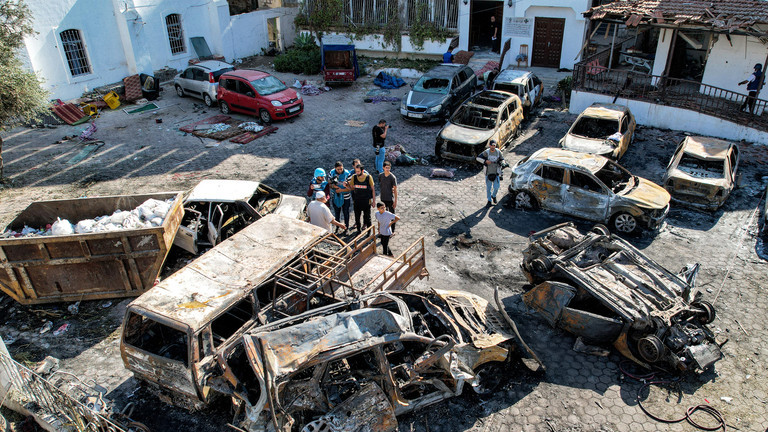
The fog of war is an ever-present reality, defined by factual uncertainty brought on by the imperfect recollections of people subjected to stresses that are unthinkable in everyday life.
It is not uncommon for opposing parties to a conflict to put forward competing narratives about a given event, with each side believing itself to be accurate, yet their respective facts and the conclusions derived therefrom failing to align. However, sometimes one or both parties have something that they want hidden, an uncomfortable reality that should, from their perspective, never see the light of day. In that case, the fog of war becomes a deliberate smokescreen designed to mislead and misdirect an audience so that the truth is never found out. If only one party is participating in such a deception, the fact will generally find a way to reveal itself. But if both parties are engaged in deliberate obfuscation, it becomes virtually impossible to find the truth.
There has been a significant amount of finger-pointing about an incident at the Al-Ahli Arab Hospital in Gaza on the night of October 17, 2023. There is no disputing the fact that just before 7pm on October 17, a rocket of undetermined origin struck the parking lot of the Al-Ahli Hospital in Gaza. The exact number of casualties has yet to be determined. Still, most sources agree that several hundred Palestinians who had been forced from their homes by Israeli bombs and sought shelter on the hospital grounds were killed, with hundreds more injured.
Hamas immediately blamed Israel, a narrative quickly picked up by most media outlets worldwide, igniting a storm of outrage against Israel and, by extension, the United States. For its part, Israel vehemently denied it had any role in the attack. Instead, it shifted responsibility to the Palestinian Islamic Jihad (PIJ), an ally of Hamas that participated in the events of October 17 and which also conducts rocket attacks against Israeli cities from Gaza. The Israelis claimed that a rocket fired by PIJ malfunctioned and landed at the hospital.
Israel backed up its assertion by providing several pieces of information, including radar data used to track rocket and mortar fire coming out of Gaza, alleged intercepted communications between two unnamed Hamas fighters who corroborated Israeli claims that the source of the deadly explosion at the hospital was an errant PIJ rocket, and a series of videos from several sources which, from the Israeli perspective, appeared to show the malfunctioning PIJ rocket hitting the hospital grounds.
Israel, however, has a history of being less than truthful about incidents where its armed forces are involved in the deaths of innocent civilian populations. A case in point is the 1996 Qana massacre in southern Lebanon, where Israeli artillery fire killed scores of Lebanese refugees who had taken shelter in a bunker located on a base belonging to UN peacekeepers. The Israelis lied about every aspect of their involvement, most likely because they were trying to hide the involvement of a secret commando unit operating near the bunkers. Only later, when the United Nations published its own investigation into the incident, did Israel finally tell the truth – that the commando unit had been detected by Hezbollah fighters, and Israel fired artillery rounds in an indiscriminate manner to help bring the squad (commanded by future Israeli Prime Minister Naftali Bennett) to safety.
In the case put forward regarding the al-Ahli Arab Hospital, the Israeli presentation leaves plenty of room for doubt. The alleged intercepted communication seemed contrived and, given the fact that Israel was, at the very time the conversation was alleged to have taken place, actively searching for cellphone activity that could be geolocated and targeted, for two Hamas fighters to violate communication security protocols to that extent while engaging in a conversation which conveniently made the Israeli case strains credulity.
The radar data provided by Israel appeared to show the trajectory of rockets that were fired around the time of the attack, creating a plausible scenario where one could have flown off course for whatever reason and struck the hospital parking lot. However, the radar data becomes less convincing when compared to a timeline of events associated with the hospital incident.
Al Jazeera has created a compelling evidence-based timeline surrounding the al-Ahli Arab Hospital incident. The first thing that should be pointed out is that the incident did not take place in isolation but instead was part and parcel of a larger battle being waged by the Israeli Air Force against Hamas and PIJ forces operating in the vicinity of the hospital grounds. From 6:54pm to 6:58pm, Israel carried out four airstrikes against targets in the general area of the Al-Ahli Hospital. This implies that there was activity taking place that Israel deemed necessary to interdict.
A clue to what that activity was occurred at 6:59 pm, when numerous rockets were fired from a position south of the hospital, towards Israel, flying in a north-northwest direction. Most of these rockets were launched between 21 seconds and 32 seconds past 6:59pm. These missiles were intercepted by the Israeli Iron Dome air defense system located just north of Israel’s northern border with Gaza.
There is a three-second gap between the time the last rocket in the salvo was fired and a single rocket took off from the same location. This rocket can be seen rising into the night sky before, five seconds later, it was intercepted by Iron Dome and destroyed.
At 55 seconds past 6:59 pm, a small explosion can be seen a few hundred meters from the Al-Ahli Hospital. Two seconds later, a larger blast erupted on the hospital grounds. This was the attack that took so many innocent lives.
The physical evidence of an attack is such that the Hamas claims of an Israeli bomb, like those which had destroyed so much of Gaza since the Israeli retaliation began, could be immediately dismissed. Hamas, however, controlled access to the hospital grounds and did its best to stoke international outrage against Israel for carrying out such an attack. First and foremost, the size of the crater and the physical damage done to the surrounding area eliminate the possibility of an Israeli bomb. But it also tends to eliminate many of the weapons used by PIJ, whose destructive power would have produced a larger crater and more general physical destruction than is evident on the ground.
A rudimentary analysis of the crater reveals a direction of travel that suggests that the rocket likely originated from a location situated to the south-southwest of the hospital, which, to some extent, supports the Israeli assertion. However, because the video evidence does not sustain this claim, one cannot jump to the conclusion that the rocket in question came from the PIJ. Moreover, the size of the crater points to a small warhead possessing less than 50 pounds of high explosives, opening the door to the possibility that a different weapon was used that night – not a PIJ rocket and not an Israeli bomb.
There was another weapon that Israel was making extensive use of in the Gaza conflict – the Mikholit air-to-ground missile, carried on Hermes 450 drones, which were used to conduct so-called “roof knocking” strikes designed to alert residents of buildings designated for destruction to flee. The Mikholit was also used to carry out precise strikes designed to neutralize a target while minimizing collateral damage.
With this in mind, another piece of evidence might illuminate what really happened at the Al-Ahli Hospital on the night of October 17. At 8:23 pm, Hananya Naftali, a digital content advisor to Israeli Prime Minister Benjamin Netanyahu, posted the following on X:
“Israeli Air Force struck a Hamas terrorist base inside a hospital in Gaza. A multiple number of terrorists are dead. It’s heartbreaking that Hamas is launching rockets from hospitals, mosques, schools, and using civilians as human shields.”
Naftali deleted this tweet, claiming he incorrectly posted it based on a Reuters news story.
The story in question, however, as originally posted, was entitled “More than 300 killed in Israeli air strike on Gaza Hospital – civil defense official.” The body of the story contained similar information: “More than 300 people were killed in an Israeli air strike on a hospital in Gaza Strip on Tuesday evening, the civil defense chief told Al-Jazeera TV. A health ministry official in Gaza said at least 500 were killed and injured in the air strike.”
Naftali’s tweet, however, contained very specific information that was lacking in the cited Reuters article: What the target was (“a Hamas terrorist base”) and what the results of the attack were (“A multiple number of terrorists are dead.”). It also provided a legal justification behind the attack (“Hamas is…using civilians as human shields.”).
If we overlay the possibility that an Israeli Hermes 450 drone fired a Mikholit air-to-ground missile, which impacted the parking lot of the Al-Ahli Hospital in Gaza on the night of October 17, 2023, an alternative scenario of what possibly occurred starts to emerge.
Naftali’s original tweet speaks of a “terrorist base inside a hospital in Gaza.” He also speaks of “human shields” used by Hamas. This implies that the Israelis possessed extremely accurate information about the nature of the target and understood the target was surrounded by a sea of Palestinian civilians taking shelter in the hospital parking lot.
The Mikholit missile is guided to its target by using a laser/electro-optical system (i.e., a nose-mounted camera) or a GPS-homing warhead. The laser/EO warhead has an accuracy of one meter, while the GPS warhead has an accuracy of five meters. Either could have been employed, although given the specificity of the target description, more precision would appear desirable. The warhead of the Mikholit missile contains around 30 pounds of high explosives and can be either a penetration weapon or a steel ball fragmentation warhead. Likewise, the warhead can be configured to detonate on contact with the ground, have a delay (useful for penetrating bunkers and/or buildings), or use a proximity detonation (for the fragmentation warhead.) Given the existence of both a single crater and evidence of fragmentation impacts on the walls of adjacent buildings, the Israelis could have used a single Mikholit missile configured with a unitary high explosive warhead fused to detonate on impact.
According to Naftali’s deleted tweet, the Israelis confirmed multiple fatalities among the targeted terrorists. This implies an ability to distinguish between the terrorists and civilians, which likewise implies the existence of information accurate enough to pinpoint a cluster of people on the ground and that these people were being visually monitored throughout the attack. Reverse engineering these extrapolations, the following narrative can be postulated.
A Hamas cell was compelled to depart from its underground shelter and take up a position in the parking area of the Al-Ahli Hospital. Naftali’s statement regarding Hamas “launching rockets from hospitals” and “using civilians as human shields” likewise implies insight into the operational methodology of those targeted. This specificity suggests that the Israelis were operating using very precise intelligence, such as the ability to intercept and track the communications associated with a specific Hamas cell or leader.
Unlike the lengthy cell phone communication produced by Israel that sought to link the missile that impacted the hospital to the Palestinian Islamic Jihad, Hamas would have more than likely instituted extreme discipline when resorting to the use of cell phones, knowing full well that Israeli intelligence would be scouring the ether for any signal that could be detected and geolocated for immediate interdiction by assets standing by for just that purpose. For this reason, Hamas has probably instituted a system of couriers mixed with hard-wired landlines for communication – cell phone use would be limited to those situations where couriers and landlines were not available or practical. If a cell phone were to be used, the conversation would be very brief and use a system of codes. Moreover, no cell phone would be used more than once, meaning that each Hamas cell had a supply of “burner” phones that would be discarded after a single use.
If Israel could detect and locate a Hamas cell and/or leader using intercepted communications, it suggests that they knew the phone number in question and its association with a specific individual. Israeli intelligence has for years sought to infiltrate itself into the cell phone supply chain of Hamas; indeed, it was in this manner that Israel was able to get a cell phone that had been fitted with 15 grams of high explosives in the hands of Yahya Abd-al-Latif Ayyash, also known as “the Engineer,” a notorious bombmaker who built the majority of the devices used by Hamas suicide bombers in the mid-1990s. When Israeli intelligence operatives called the cellphone number and confirmed that it was Ayyash on the other end, they detonated the high explosive charge, killing him instantly.
If Israel were able to take control of the “burner” phone supply chain and had specific knowledge of the numbers in question and their association with Hamas hierarchy, this would be one of the most highly guarded secrets in the Israeli intelligence community – the kind of secret that would only be shared with a very select group of individuals on a strictly need-to-know basis. Any compromise of such a capability would result in Hamas either abandoning the “burner” phones in question or using the compromised phones to spread disinformation. For this reason, Israel would be reluctant to act using intelligence gained from such a source out of fear that, in doing so, they would have alerted Hamas to the existence of compromised phones.
If Israel were to act on intelligence of such sensitivity, the nature of the target – such as a specific Hamas cell or leader – would have to justify the risk of potential compromise. A decision of this magnitude would be made at the highest level – the prime minister. This could explain why a digital content creator was in possession of such specific details regarding the nature of the target, the results of the attack, and any conversation that might have taken place between those authorizing the attack and legal advisors about the legality of such an attack under the law of war, where issues of proportionality of response are linked to the military value of the target in question.
It would also expose Hananya Naftali as one of the most incompetent advisors in the universe surrounding Benjamin Netanyahu.
The truth about what happened at the Al-Ahli Hospital is still waiting to be told. The evidence needed to expose this truth exists on the grounds of the hospital, in the crater and the surrounding area, in the form of the rocket remnants that killed and wounded so many innocent Palestinian civilians. It is understandable why Israel would seek to obfuscate any details that linked the attack to it. Less so is why Hamas would do the same. One apparent reason is that the evidence that exists would validate the Israeli claim that the rocket in question was one fired by Palestinian Islamic Jihad – Hamas would never want to admit this, having invested so much effort in sustaining the belief that Israel was behind the attack.
But why would Hamas suppress evidence that Israel did, in fact, conduct the strike on the hospital? If a Mikholit rocket were, in fact, the culprit, Hamas would undoubtedly have the physical evidence to support such a conclusion. One problem that could be associated with releasing such information is that it changes the script in a manner that could be inconvenient for Hamas. As things currently stand, Hamas is in control of a narrative that conveniently lends itself to the global outrage over Israel’s indiscriminate bombing of Gaza and the slaughter of civilians that this has produced. The outrage over these Israeli actions has coalesced around the Al-Ahli Hospital incident. It has manifested itself in demonstrations around the world, which, as they play out, are to the distinct advantage of Hamas.
Under normal conditions, the fog of war is generated by uncertainty regarding what happened during an event and is the byproduct of the confusion produced by combat-related stress. Sometimes, however, the fog of war is deliberately generated, like a smokescreen, to impede the pursuit of truth. Regarding the Al-Ahli Hospital incident, the latter appears more likely than the former. (It should be noted that Israel adamantly denies that any military operations were taking place in the vicinity of the Al-Ahli Hospital at the time of the October 17 incident, something the video evidence provided by Al Jazeera easily refutes. Israel does not publicly acknowledge ongoing special operations and/or intelligence operations. The Israeli denial only reinforces the likelihood that the original Naftali tweet was based upon accurate information).
If Hamas were to produce evidence that proved that the attack was not a result of indiscriminate Israeli bombing but instead carried out using a Mikholit rocket, the narrative would change dramatically. Far from being a case of wanton slaughter, the attack would rather assume the character of a deliberate Israeli action against a Hamas cell whose existence and activities Hamas would not want to make public – especially if the facts lend themselves to a narrative that has Hamas using the Palestinian civilians packed into the hospital parking lot as human shields. Operational sensitivities on both sides would, in such a scenario, lead to both Israel and Hamas covering up the truth about what happened at the Al-Ahli Hospital, a perverse collusion with one uniting fact: The willingness of both sides to treat the Palestinian people as tragic pawns in a larger power struggle between two opposing powers that are both criminally indifferent to the resulting human carnage.
SCOTT Ritter for patricklancaster.locals.com
